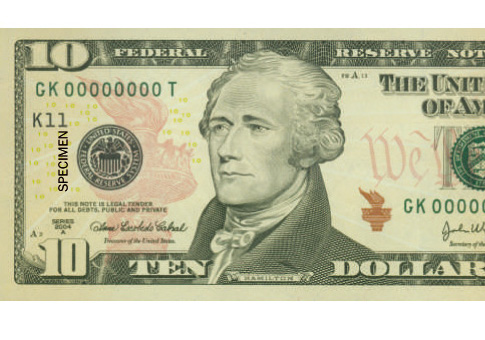Treasury Secretary Jack Lew is expected to announce this week that Alexander Hamilton’s face will stay on the $10 bill while Andrew Jackson will be replaced with a woman on the $20 bill, CNN reported over the weekend.
Hamilton fans slammed government officials last summer after they revealed plans to strip the nation’s first Treasury Secretary from the $10 bill. Critics argued that Jackson, who amassed much of his wealth through slave ownership, should instead be removed.
Hamilton founded the damn U.S. Mint and this is how they repay him? Jackson didn't even like the idea of paper money. #SaveHamilton
— Hannah Thoburn (@HannahThoburn) June 18, 2015
CNN reported that the pressure led officials to decide that Hamilton’s face would remain on the front of the bill. A mural illustrating the women’s suffrage movement, including a depiction of Susan B. Anthony, will be placed on the back of the bill.
"When we started this conversation not quite a year ago, it wasn’t clear to me that millions of Americans were going to weigh in with their ideas," Lew told CNBC. "We’re not just talking about one bill. We’re talking about the $5, the $10, and the $20. We're not just talking about one picture on one bill. We’re talking about using the front and the back of the bill to tell an exciting set of stories."
Support to save Hamilton on the $10 bill gained momentum after a Broadway musical about the Founding Father struck massive success this year.
Last May, more than 600,000 people petitioned the Treasury to boot Jackson off of the bill instead of dropping Hamilton. Slave abolitionist Harriet Tubman, who is best known for helping people escape slavery through the underground railroad, was chosen by the group to replace Jackson.
People have voted Harriet Tubman to potentially replace Andrew Jackson on the $20 bill http://t.co/M5uVoKe3Dc pic.twitter.com/Tae5wWEnu9
— BuzzFeed (@BuzzFeed) May 13, 2015
A woman’s face will not grace the $20 bill until 2030 because of a lengthy design and anti-counterfeit process, according to CNN.
"The blue security ribbon on the $100 note took over 15 years to develop," a source told CNN. "This level of technology is why our counterfeiting remains at less than .01 percent of currency in circulation. We should not expedite the issuance of any currency for political purposes."
